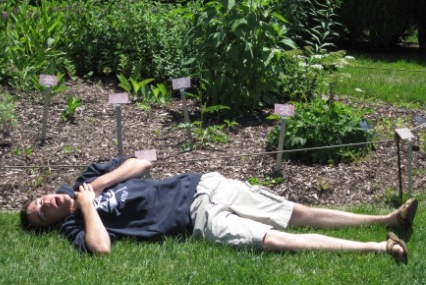I missed my regular posting on Wednesday since (1) I’m on vacation and (2) I hadn’t had time to find anything sufficiently worthy of posting. (Of course I have a compost barrel full of snake oil products I could rant about, but even I get tired of that. Especially on vacation.)

Note the strategic head placement
But yesterday we visited the Niagara Parks Botanical Gardens just north of Niagara Falls. We didn’t have nearly enough time to see it all, so I’ll share just one special corner.

The Poison Plant collection isn’t listed on the map, and the only reason I noticed it at first was the giant hogweed (Heracleum mantegassianum), a particularly noxious introduced species, in the center. Looking closer, I discovered unique signage for these plants.

I think these types of display gardens – poisonous plants, noxious weeds, etc. – are great educational tools. The trick, of course, is keeping them from setting seed and spreading. And keeping 15-year-olds out of them.

Like the sign, like the 15-year-old’s sense of humor. Maybe he could get a summer job as a Botanical Garden actor….
Hi, couldn’t find any other way to email you on this site, so I have a question:
Is there really any evidence that planting tomato transplants deeply (so they’ll root along the stem) results in a better crop?
I’ve been an organic farmer, IPM scout for conventional tomato growers in SC, have a BS in landscape hort from NCSU and now design and install gardens for homeowners, schools restaurants, etc. So I’ve planted beaucoup tomatoes and my gut feeling is that the depth of planting doesn’t really make a significant difference, tho I’ve never run a comparison to test this. Has anyone else ever checked this theory out experimentally? thanks Frank